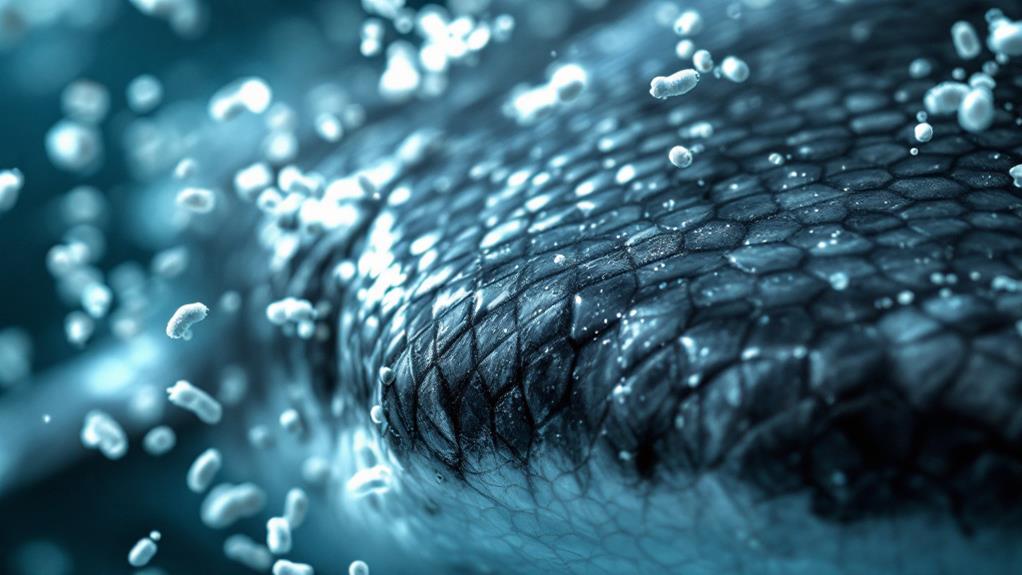The Amazing Origins of the Bullet Train: High-Speed Travel Inspired by Nature
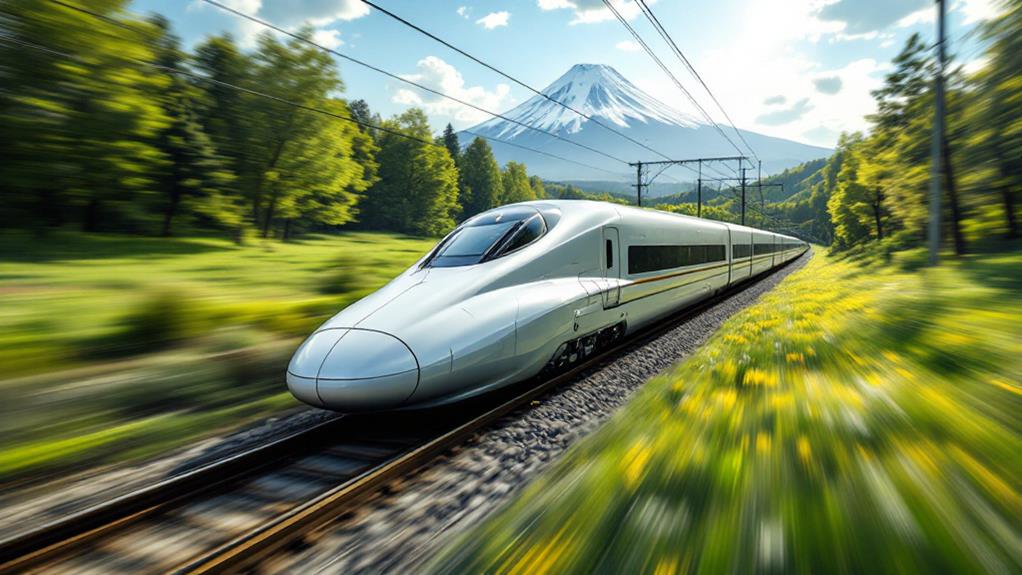
You'll be amazed to embark on that nature's most ingenious designs have shaped the iconic bullet train. From the kingfisher's beak to the owl's silent wings, engineers have drawn inspiration from various animals to revolutionize high-speed rail travel. The train's aerodynamic nose, inspired by the kingfisher, reduces air pressure and eliminates sonic booms. Owl-inspired modifications to pantographs dramatically cut noise, while penguin-like streamlining enhances speed and efficiency. Even fish scales have influenced the train's surface texture to minimize drag. These biomimetic solutions have not only solved technical challenges but also improved energy efficiency and passenger comfort. The exploration into nature's influence on bullet trains is just beginning.
The Need for Speed
Racing against time, Japan's post-war economic boom created an urgent need for faster transportation. You'd have seen the country's rapid industrialization putting immense pressure on its existing rail network. As businesses expanded and cities grew, the demand for swift, efficient travel between major urban centers skyrocketed.
The conventional trains of the era simply couldn't keep up. You'd have noticed how they struggled with slow speeds, frequent stops, and outdated technology. Engineers recognized that a revolutionary approach was necessary to meet the nation's changing needs.
This is where the concept of a high-speed rail system emerged. The goal was to develop a train capable of quick acceleration and maintaining high velocities over long distances. To achieve this, designers focused on aerodynamics and reduced friction, drawing inspiration from nature's fastest creatures.
You'd be amazed at how they studied the sleek bodies of birds and fish, incorporating these streamlined shapes into their designs. By minimizing air resistance and optimizing energy efficiency, they laid the groundwork for what would become the world's first bullet train – a true marvel of engineering and innovation.
Nature's Aerodynamic Secrets
In the quest for aerodynamic perfection, engineers turned to nature's most efficient flyers and swimmers. You'll find that the bullet train's sleek design owes much to these natural marvels. Birds, with their streamlined bodies and efficient flight patterns, provided priceless insights. Engineers studied how birds adjust their wings to reduce drag and increase lift, applying these principles to the train's exterior.
Insect wing structures also played a pivotal role. The intricate patterns on dragonfly wings, for instance, inspired the development of surface textures that minimize air resistance. You'll notice how the train's nose mimics the beak of a kingfisher, allowing it to slice through air with minimal disturbance.
The bullet train's pantograph, the apparatus that connects it to overhead power lines, underwent redesign based on owl feathers. This resulted in a quieter, more efficient system. Even the train's undercarriage benefited from nature's lessons, with whale fins inspiring smoother airflow management.
Kingfisher's Beak Breakthrough
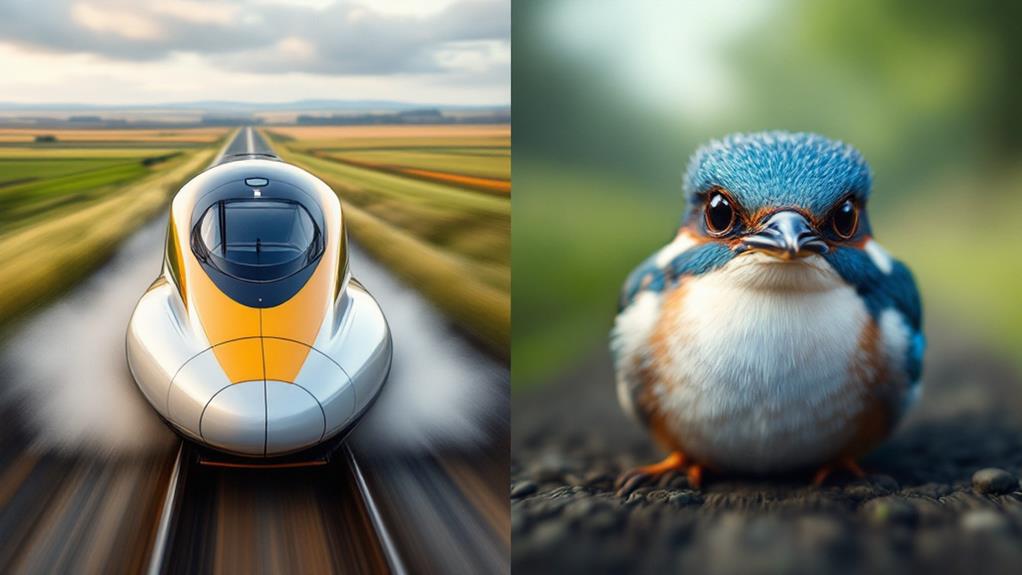
Inspiration often strikes in unexpected places. When Japanese engineers faced a problem with their bullet train design, they turned to an unlikely source: the kingfisher. This bird's remarkable ability to plunge into water with minimal splash caught their attention, leading to a breakthrough in train aerodynamics.
You might wonder how a bird's beak relates to train design. The kingfisher's long, pointed beak allows it to seamlessly transition from air to water, minimizing resistance. Engineers realized this principle could be applied to bullet trains entering tunnels. By imitating the beak structure, they could reduce the air pressure buildup that caused loud sonic booms.
The team studied the kingfisher's flight mechanics and beak shape, incorporating these features into the train's nose design. The result was a more streamlined front that significantly diminished noise and improved energy efficiency. This biomimetic approach not only solved the tunnel boom problem but also increased the train's speed by 10% while using 15% less electricity.
The kingfisher-inspired design demonstrates how nature's solutions can revolutionize human technology. It's a prime example of biomimicry's potential in engineering and transportation.
Owl-Inspired Noise Reduction
Another avian species played an indispensable role in refining the bullet train's design: the owl. You might wonder how these nocturnal predators influenced high-speed rail technology. The answer lies in their silent wings and efficient flight.
Engineers observed that owls can fly almost noiselessly, even at high speeds. This ability is essential for their hunting success. They uncovered that the owl's wing structure, particularly the serrated edges of their feathers, helps break up air turbulence and reduce noise.
Inspired by this natural design, researchers developed special serrated edges for the pantographs - the devices that connect the train to overhead power lines. These owl-inspired modifications remarkably reduced the noise generated by the train, especially at high speeds.
But the improvements didn't stop there. The owl's wing shape also influenced the design of the train's nose and pantograph covers. These streamlined elements further reduced air resistance and noise, making the bullet train not only faster but also quieter and more energy-efficient.
Penguin's Streamlined Body Design
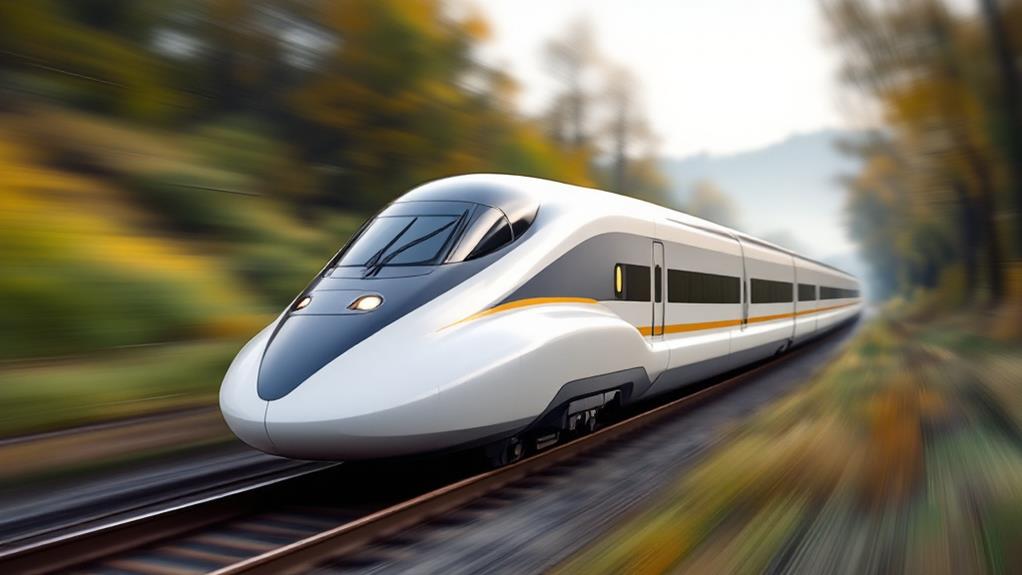
While owls contributed to noise reduction, penguins played a key role in shaping the bullet train's aerodynamic profile. You might wonder how these flightless birds influenced high-speed rail design. The answer lies in the penguin's streamlined anatomy, which allows them to effortlessly glide through water with minimal resistance.
Engineers studying the penguin's body shape noticed its tapered form, smooth contours, and fusiform profile. These features enable penguins to swim at high speeds while conserving energy. Designers applied these principles to the bullet train, creating a sleek nose cone that parts the air efficiently, reducing drag and improving fuel economy.
The train's elongated body mimics the penguin's streamlined form, allowing it to slice through the air with minimal turbulence. You'll notice how the train's exterior lacks protruding elements, much like a penguin's smooth feathers. This design minimizes air resistance, enabling the train to maintain high speeds while using less energy.
Fish Scales and Energy Efficiency
Fish scales contributed a fundamental element to the bullet train's design, enhancing its energy efficiency. When you look at a fish gliding through water, you'll notice its seamless movement. This hydrodynamic efficiency is largely due to its scales, which reduce friction and turbulence.
Engineers studied this natural phenomenon and applied it to the bullet train's exterior. They created a textured surface mimicking fish scales, which helps the train slice through air more smoothly. This design considerably reduces air resistance, allowing the train to maintain high speeds with less energy consumption.
The scale-inspired surface isn't just about speed; it's an essential energy saving mechanism. By decreasing drag, the train requires less power to overcome air resistance, resulting in lower fuel consumption and increased efficiency. You'll find this biomimetic approach particularly effective at the train's nose and along its body, where air pressure is highest.
This innovation demonstrates how nature's solutions can be adapted to modern technology. By emulating fish scales, engineers have created a more sustainable and efficient high-speed rail system, proving that sometimes the best answers are found in the natural world around us.
Tunnel Boom Problem Solved
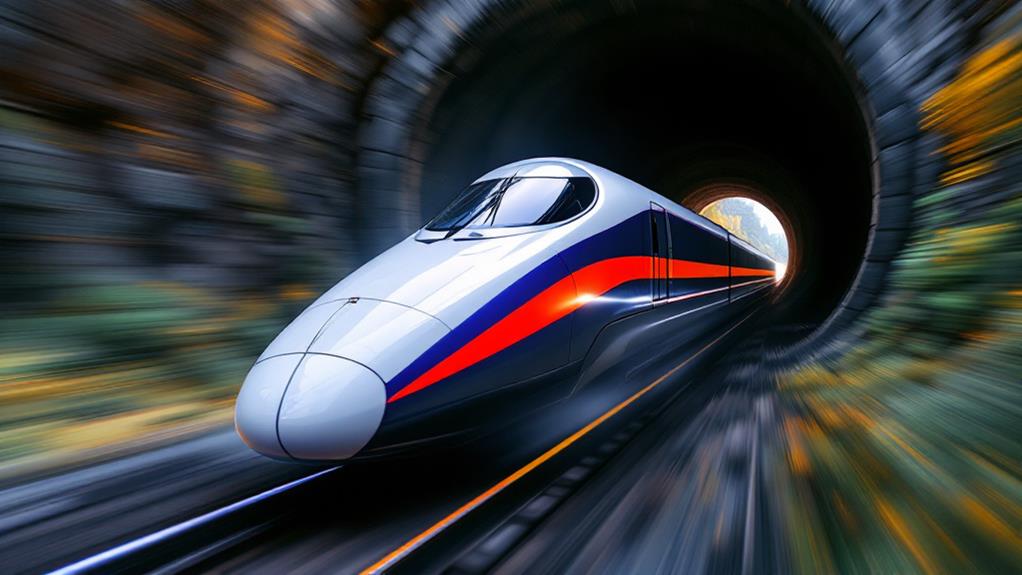
The bullet train's design wasn't just about streamlining its exterior. Engineers faced a significant challenge when it came to high-speed rail travel through tunnels. As trains approached speeds of 200 mph, they created intense pressure waves that could potentially lead to tunnel collapse risks. This phenomenon, known as the tunnel boom, threatened the safety and feasibility of the entire bullet train project.
To solve this problem, engineers had to think creatively. They developed innovative structural reinforcement methods to strengthen tunnel walls, making them more resistant to the pressure waves. Additionally, they redesigned the train's nose to be longer and more pointed, which helped to gradually displace air as the train entered tunnels. This shape reduced the intensity of the pressure waves, minimizing the risk of damage to both the tunnels and the train itself.
You might be surprised to learn that these solutions weren't just about safety. They also improved the passengers' comfort by reducing the sudden changes in air pressure experienced when entering and exiting tunnels at high speeds. The tunnel boom problem's resolution was an essential step in making bullet trains a practical and comfortable mode of transportation.
Future Biomimicry in Rail Travel
Numerous innovations in rail travel are drawing inspiration from nature, a concept known as biomimicry. You'll see future trains mimicking the sleek shapes of fast-swimming fish or the aerodynamic profiles of birds to reduce air resistance and improve energy efficiency. Engineers are exploring ways to incorporate sustainable energy capture systems inspired by plants' photosynthesis, potentially allowing trains to generate and store power as they travel.
Adaptive train design is another area where biomimicry is making waves. You might encounter trains that can adjust their form in response to weather conditions or passenger loads, much like how certain animals adapt to their environments. A train that can expand or contract its carriages based on demand, or alter its exterior surface to minimize drag in different weather conditions.
You'll likely see advancements in noise reduction techniques inspired by owl feathers, and vibration dampening systems modeled after the shock-absorbing properties of animal paws. These biomimetic innovations will not only enhance the passenger experience but also contribute to more efficient and environmentally friendly rail travel.



